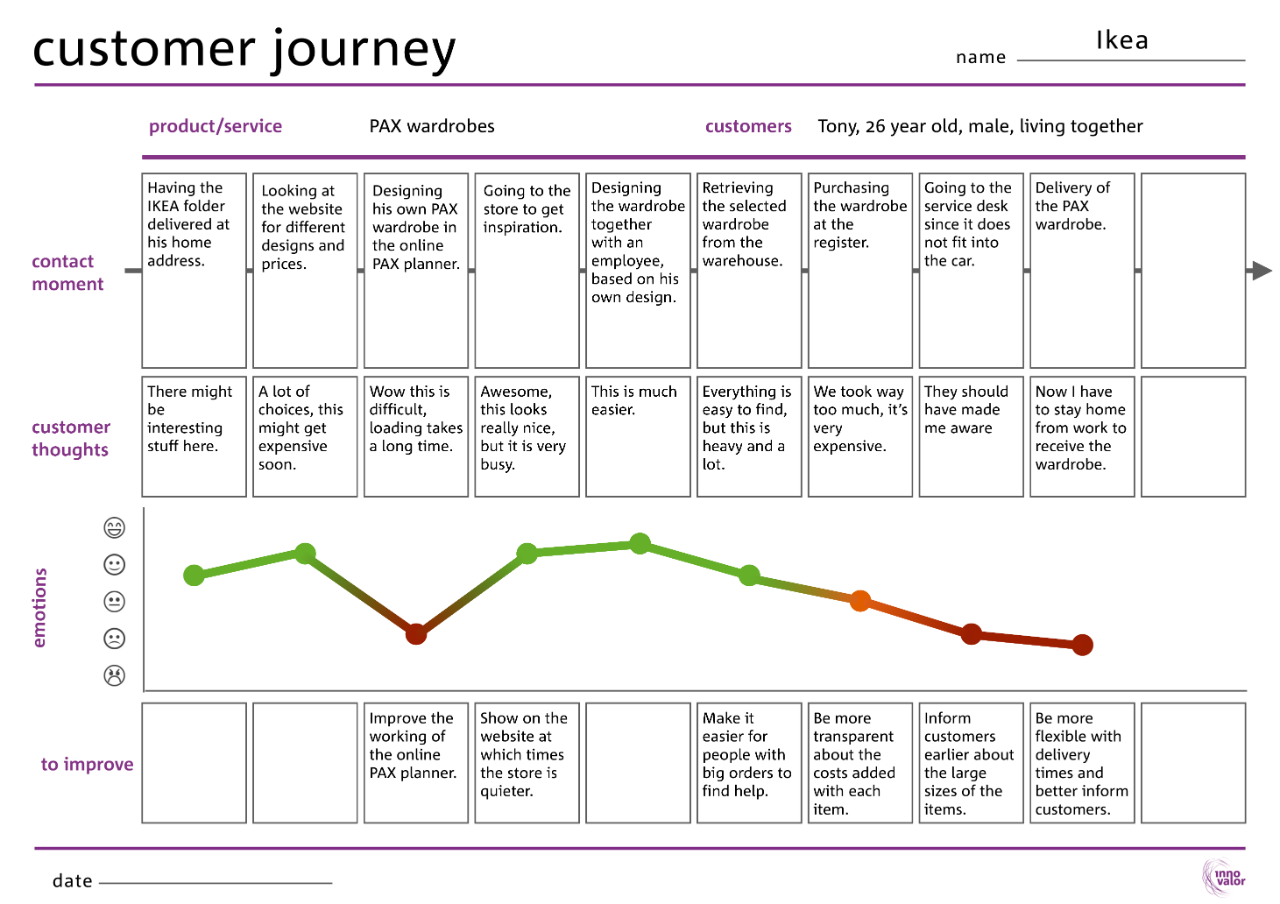Customer Journey

Tips for use
If you have a broad range of products or services, it is easier to focus on them individually and select just one product for the Customer Journey.
Use the Customer Journey template to brainstorm about the journey that your customers go on when interacting with your business. For inspiration, have a look at IKEA which provides an example of the practical application of the tool.
How to use
Select one of your products or services for which you want to define the customer journey and describe it in the space provided on the template. Next, choose the specific customer group whose journey you want to map. Be as specific as possible. This will help you empathise with that group and more accurately imagine their thoughts and emotional state.
Contact moments
Think of which contact moments exist between your customer and your business. Try to account for every stage in the buying process if there is a contact moment. Phases in the buying process are:
- Orientation: when the customer becomes aware of the existence of your product.
- Comparison: when the customer researches whether or not to buy your product.
- Purchase: when the customer buys your product.
- Usage: when the customer uses your product.
- After sales: when the customer has complaints or questions after buying the product.
Communication channels
To help you identify all of the contact moments, consider the range of channels that customer might use to interact with your business. Possible channels are:
- Face-to-face: Does the customer visit the physical store, or meets an employee of your business?
- Phone: Does the customer call your business or does your business call the customer?
- Website: Does the customer visit your website?
- Email: Does the customer receives e-mails from or writes e-mails to your business?
- Newsletter: Does the customer read your newsletter?
- Social Media: Does the customer uses social media to interact with your business?
- Television: Does the customer see your business on television?
- Radio: Does the customer hear about your business on the radio?
- News Paper: Does the customer read about your business in a paper?
Answering these questions for each stage of the previous explained buying process helps to see when and where contact moments exist. Answer these questions and write down all the contact moments on the template from first to last in chronological order.
Customer experience
For each contact moment, find out what customers might be thinking during the contact moments? There are two ways to do this
- Ask your customers about their experience
- Place yourself in your customer’s point of view
Based on these thoughts, try to extrapolate the customers’ emotional state during the various contact moments, e.g. happy, satisfied, annoyed, disappointed, angry or a combination of these.
Improve the customer journey
It may not be possible to improve every aspect of a dissatisfied customer’s experience. Nobody enjoys parting with their money, However, you can now consider what you could change to make the experience of interacting with your business more enjoyable at each contact moment. Start by exploring the reasons for the customer’s emotional state at each point. Is the customer dissatisfied with an employee’s level of expertise, the level of service provided, or the quality of the product itself? Then consider how you could improve each aspect.